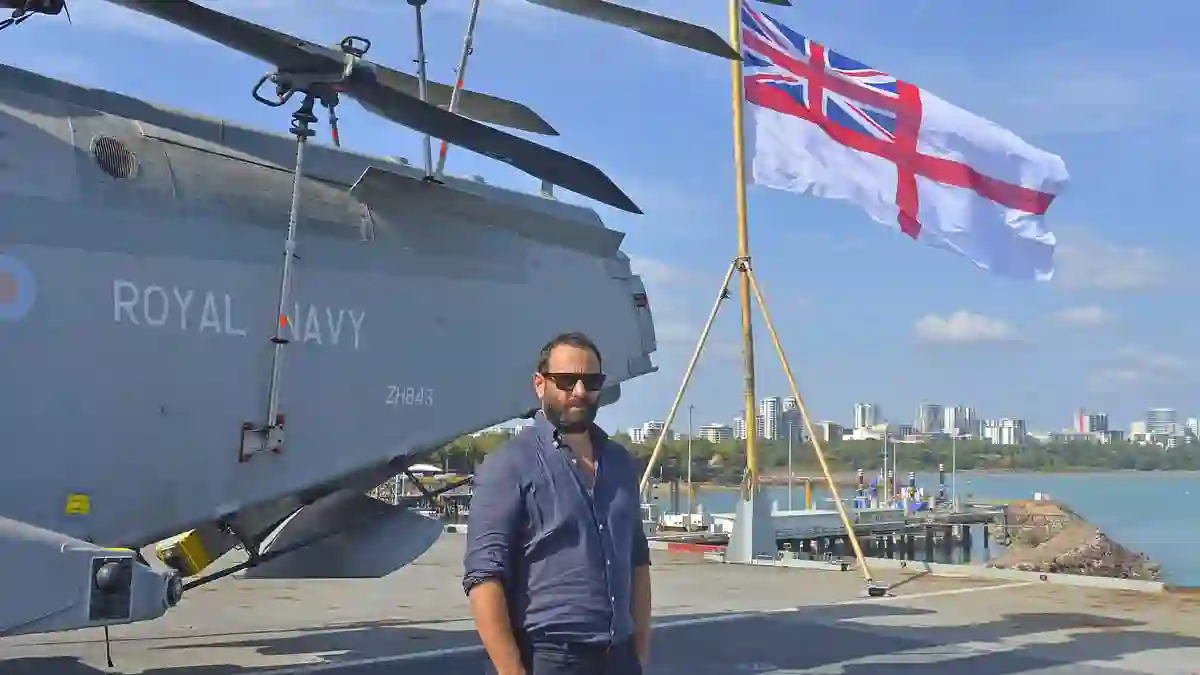When you think about British military strength, few things capture it quite like the HMS Prince of Wales.
This aircraft carrier, the flagship of the Royal Navy, is a massive steel giant stretching over 900 feet.
Standing near the back of the ship, you can see a row of sleek F-35 fighter jets lined up like arrows ready to launch into the sky.
The Power of the F-35 Jets and the Ship’s Crew
These advanced jets can take off from the carrier’s ramp at speeds of 170 mph, and they’re equipped to strike targets on land and sea with missiles and bombs.
The Prince of Wales carries a crew of around 1,600, and today I’m onboard alongside Britain’s Foreign Secretary David Lammy and Defence Secretary John Healey.
We’re docked in Darwin, Northern Australia, where the ship and 3,000 British troops are taking part in Exercise Talisman Sabre — the largest military exercise ever hosted by Australia.
Strengthening the UK-Australia Military Partnership
This exercise, involving 19 nations and more than 35,000 military personnel, highlights the growing partnership between the UK and Australia.
Both Lammy and Healey emphasized the importance of reinforcing alliances in a world facing increasing threats.
It’s been over 25 years since a British aircraft carrier visited Australia, making this a significant event.
Why the Indo-Pacific Region Matters More Than Ever
The Indo-Pacific is emerging as a hotspot for potential conflict, especially with China challenging US dominance.
Many expect tensions over Taiwan to escalate soon, with the UK and Australia ready to back the US if conflict breaks out.
While officials won’t comment on specific war plans, it’s clear Britain sees maintaining readiness here as crucial.
The Reality of Rising Tensions with China
Chinese military activity in the region is increasing.
Earlier this year, China conducted live-fire naval exercises in the Tasman Sea, testing equipment possibly meant for an invasion of Taiwan.
Incidents like collisions between Chinese and Philippine vessels in the South China Sea underline how volatile the situation has become.
Reviving Historic Alliances in a New Era
After WWII, Australia turned away from Britain’s defence, forging a new alliance with the US.
But that historic relationship is now being rekindled through agreements like AUKUS, which includes sharing nuclear submarine technology — a first for Britain and the US with any other nation.
Embracing New Military Technology to Face Modern Threats
Modern warfare is changing fast, with drones and new tech leveling the playing field.
The British military understands this well, incorporating drones alongside traditional aircraft on the Prince of Wales.
These drones can operate autonomously, finding and striking targets with deadly precision.
Britain’s Defence Spending and Strategic Challenges Ahead
There’s ongoing debate about the UK meeting the NATO goal of spending 5% of GDP on defence by 2035.
While Defence Secretary Healey is confident this target will be met, the financial challenges facing Britain make it a steep climb — especially with threats looming now, not decades away.
The Global Nature of Today’s Conflicts
Foreign Secretary Lammy points out that conflicts in the Indo-Pacific are deeply connected to events in Europe, the Middle East, and beyond.
Weapons and soldiers from the region have appeared in places like Ukraine, highlighting how global and interconnected today’s security challenges are.
Building a Coalition to Face a New Global Order
Lammy warns of a looming coalition of nations like China, Russia, and Iran working together, not by ideology but shared interests.
To counter this, the West must strengthen alliances across the Atlantic and Indo-Pacific — working closely with countries like Japan, South Korea, Australia, and others.
Britain’s Historic Role in Forging Alliances Continues
The UK has a long history of building and leading alliances, from defeating Napoleon to winning the World Wars.
While it no longer rules the waves alone, its soft power, military expertise, and diplomatic skill remain vital in today’s complex world.
The HMS Prince of Wales as a Hub for Future Defence Strategy
More than just a ship, the Prince of Wales symbolizes Britain’s commitment to global partnerships and modern warfare.
It’s a floating command centre designed to bring allies together and project strength where it’s needed most.
Looking Ahead: Britain Finding Its Role in a Dangerous World
As I stepped off the ship, I reflected on how Britain might be rediscovering its place in a world that’s smaller, faster, and more dangerous than ever.
The challenges ahead are huge, but with strong alliances and modern capabilities, there’s hope for security and stability in this new era.
